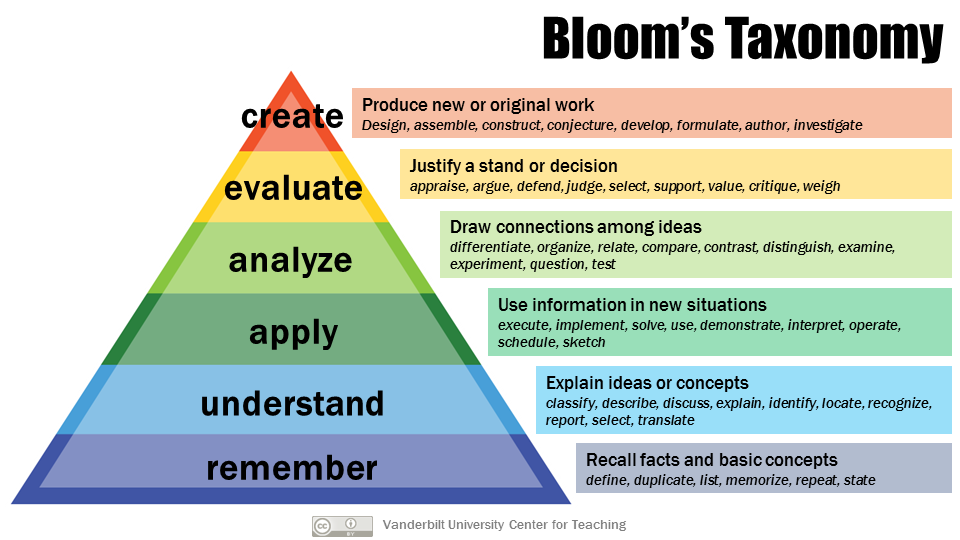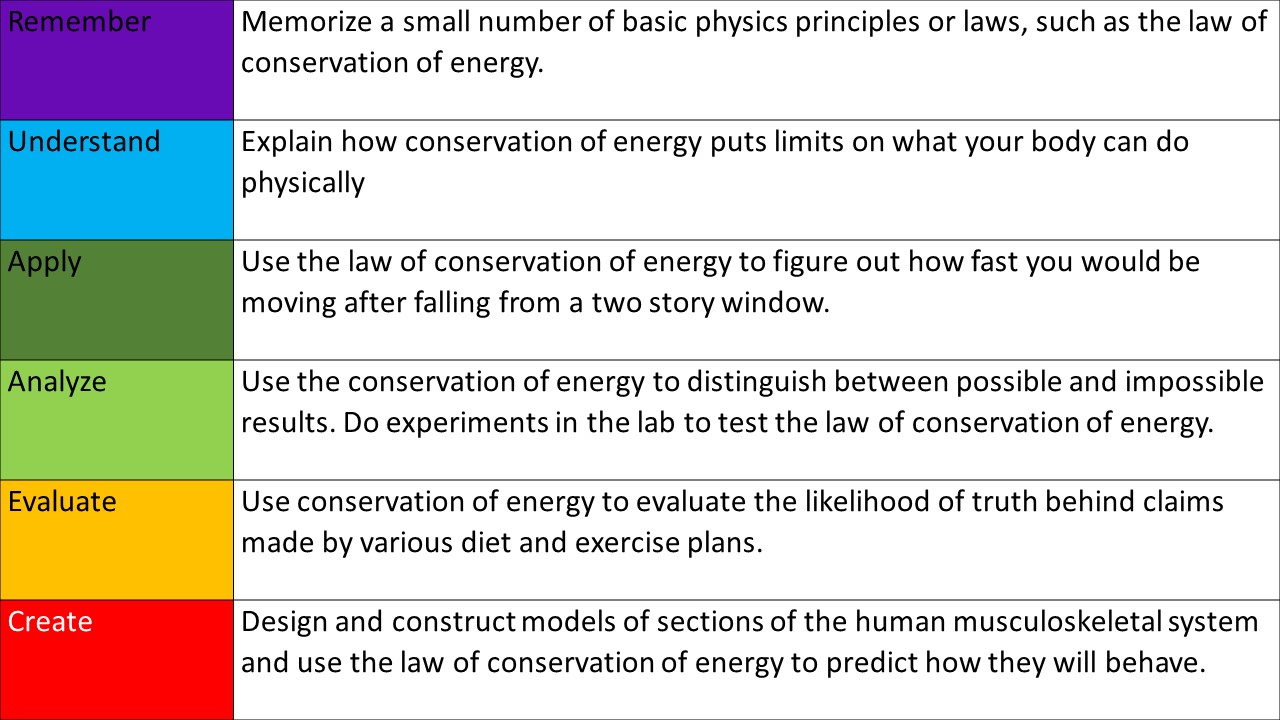1 Prepare Your Expectations
This course is an introductory level science course, which typically means the students are expected to remember, understand, apply, and at times analyze the concepts covered in the course. These expectations correspond to the first four levels of Bloom’s Taxonomy, a tool for categorizing the process of thinking and learning, a.k.a cognition. Further into your academic timeline you will take courses with higher numbers and greater focus on the upper levels. However, to better prepare you for success in a complex world, this course may also use guided projects to expose you to the higher level cognitive processes.

The following table uses the concept of conservation of energy to illustrate of how students might be expected to participate in each level of Bloom’s Taxonomy within an introductory physics course.

Reinforcement Exercises
- "Blooms Taxonomy" by Vanderbilt Center for Teaching and Learning is licensed under CC BY 4.0 ↵
A framework for categorizing educational goals.
The mental action or process of acquiring knowledge and understanding through thought, experience, and the senses

